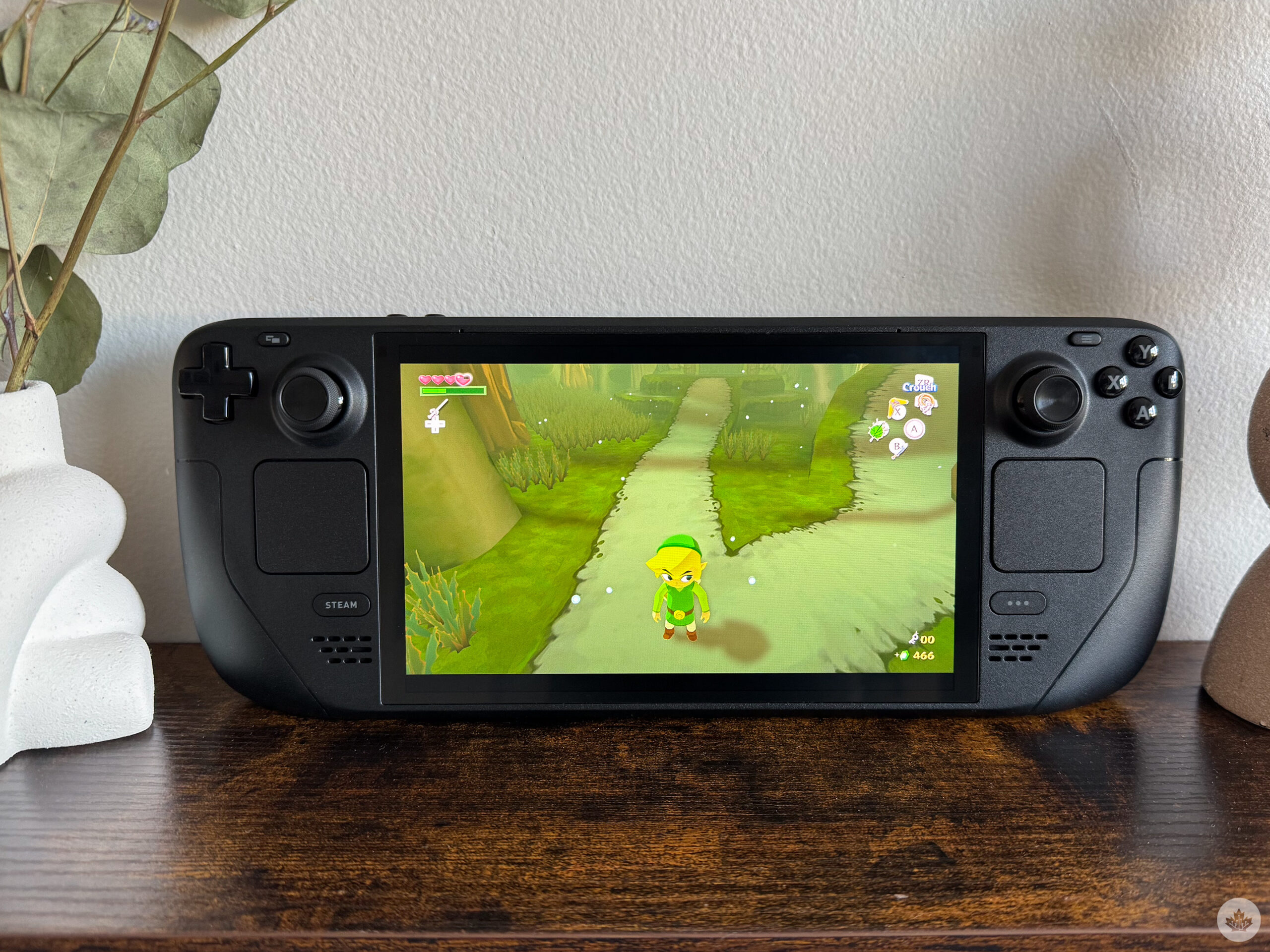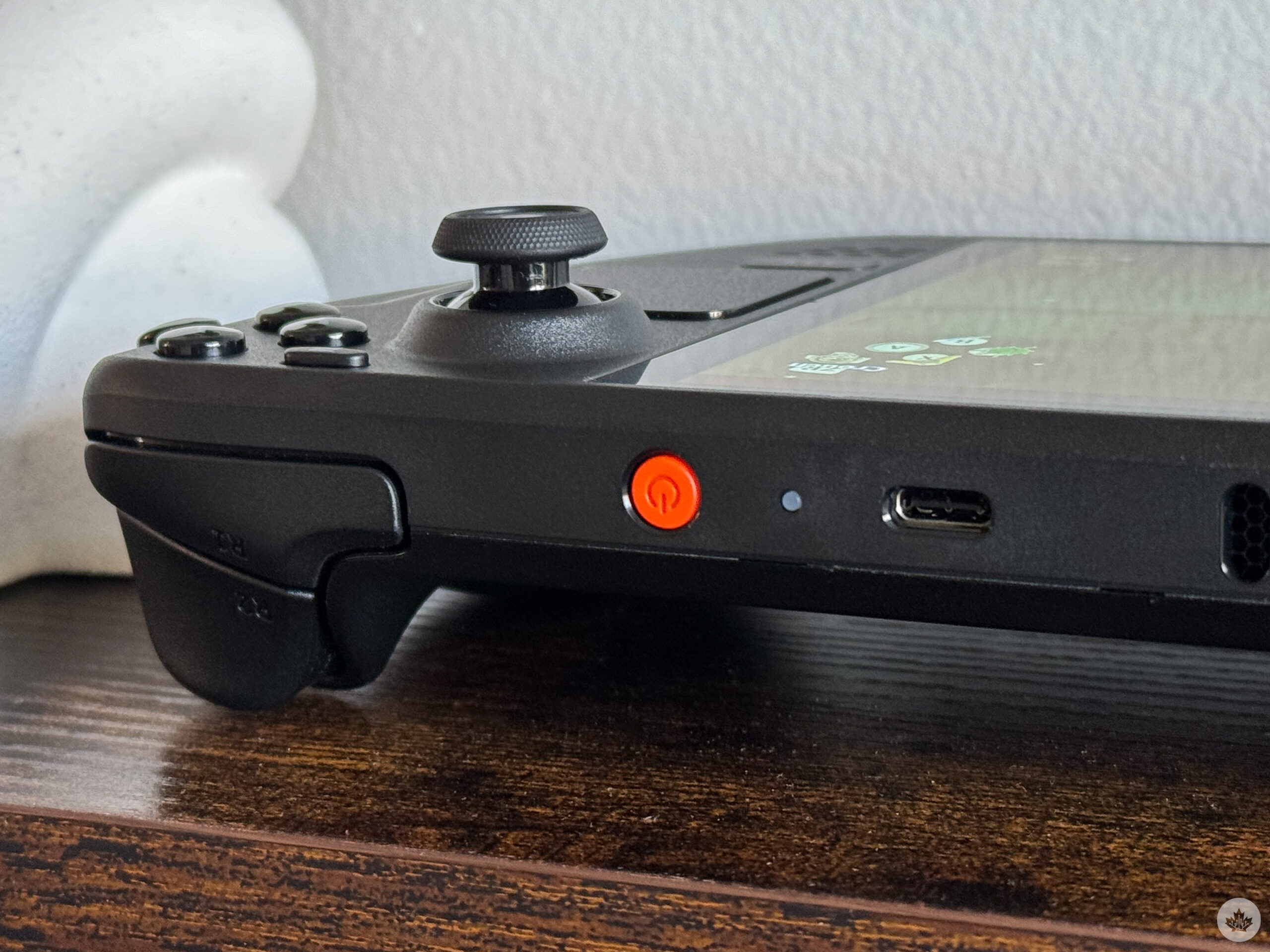
The Steam Deck OLED is undeniably better than the Steam Deck, but it isn’t the “Steam Deck 2” some likely hoped it would be.
Like the jump between the Switch and the Switch OLED model, the Steam Deck OLED’s upgrades are mostly marginal and will only matter to some. However, if you’re planning to buy a Steam Deck, it’s clearly worth splurging for the OLED version if you have the extra cash. On the other hand, if you already own the LCD Steam Deck, you’re likely okay with holding off on the OLED version.
But first, let’s take a look back at how the Steam Deck has changed since 2022 when I called it the “handheld of my dreams,” while also emphasizing that, at the time, it remained a work in progress.
“Overall, the Steam Deck OLED is a worthwhile, mid-generation update to the original Steam Deck.”
When the handheld first launched, the Steam Deck felt more than a bit incomplete. Game support was spotty, its desktop OS was a mess and getting emulators up and running was so complicated that it almost wasn’t worth the effort.
Since then, Valve’s ‘Deck Verified’ program has expanded considerably (this is actually one of the Steam Deck’s key advantages over handhelds like the Legion Go or ROG Ally), with most major new releases supporting Valve’s handheld either at release or soon after. SteamOS, the Deck’s desktop operating system, is also far more stable and capable.
Overall, the Steam Deck feels more like a complete device nearly two years after its release.

Wind Waker HD looks great emulated on the Steam Deck OLED despite not officially supporting HDR.
With that out of the way, let’s get into the relatively recently released Steam Deck OLED.
First off, while I initially assumed Steam improved the handheld’s build quality to some extent, that doesn’t appear to be the case. Don’t get me wrong; the OLED Steam Deck still feels like an overall solid device, but after a few weeks, I encountered the same weird flex/clicking issues I ran into with the LCD Steam Deck. Thankfully, popping off its back remains straightforward and is slightly easier with the OLED version. As a side note, a few carefully placed pieces of medical tape on its several snaps solved the annoying clicking issue — and to be fair, this didn’t work with the LCD Steam Deck, resulting in me buying a third-party Jsaux back plate.
Beyond the obvious orange ‘Power Button,’ other physical changes to the Steam Deck OLED include black joysticks I’d describe as slightly grippier. They’re nicer but don’t really feel that different from the original Steam Deck’s joysticks. The haptics in the trackpads have also been marginally improved.
But what about the screen, the main reason for opting for this iterative update to the Steam Deck? Thankfully, it looks stellar. Whites are brighter, blacks are darker and colours pop, resulting in an overall more vibrant display. The Steam Deck OLED still features the same 1280 x 800-pixel resolution as the original Steam Deck, though the refresh rate has been bumped up to 90Hz alongside HDR support.
Oh, and the display is slightly larger, coming in at 7.4-inches vs 7-inches. You wouldn’t think the extra 0.4-inch would be noticeable, but similar to the Switch OLED model’s display, the bigger screen makes a surprisingly significant difference, especially if you play relatively close to your face like me.
I’m a real Amazon delivery person now. pic.twitter.com/gmMhJJ0lm6
— Patrick O'Rourke (@Patrick_ORourke) February 4, 2024
Every game I’ve played on the Steam Deck OLED, including Halo Infinite, Red Dead Redemption II, Days Gone and Death Stranding (the one I spent the most time with), looks great on the upgraded screen. As a side note, I remain shocked at how much fun I’ve had with Death Stranding’s weirdness and focus on what is basically taking on the role of a sci-fi Amazon delivery person, especially since Hideo Kojima’s games have never really resonated with me.
“Unfortunately, the OLED Steam Deck doesn’t solve its predecessor’s battery life woes.”
Titles that support HDR, which remain few and far between on the Steam Deck, offer an extra punch to their brightness. For example, Death Stranding‘s sky and desolate horizons feature an added level of vibrancy thanks to the Steam Deck OLED’s support for HDR. On the other hand, pretty much every game I played on the handheld, including even an emulated version of the Wii U’s Wind Waker HD, looks noticeably better running on the newer hardware thanks to the updated screen (for what it’s worth, I feel the same way about even older Switch titles running on the Switch OLED model).
I’ve found I haven’t really taken advantage of the OLED display’s 90Hz refresh rate because I’ve spent most of my time catching up on older PS4 titles that push the Steam Deck to its limits. I usually need to turn the graphics way down to get 90Hz out of higher-end games, so I settle for more balanced visuals at 30fps. That said, the top-down Zelda-inspired Canadian indie title Tunic looks stunning with the display refresh rate set to 90Hz thanks to its fluid animation.

The Steam Deck OLED’s orange power button is pretty cool looking (other than the display, it’s also the only notable visual difference separating it from its LCD predecessor).
Of course, kicking the fresh rate up to 90Hz also kills the Steam Deck OLED’s battery faster. Speaking of battery life, I haven’t noticed a noticeable difference when playing high-end games with the handheld despite its bigger 50Whr battery (the LCD Steam Deck features a 40Whr battery). With high-end titles, the portable still lasts in the range of 2-3 hours depending on graphics settings. Similar to the LCD Steam Deck, I spend a lot of time using the OLED Steam Deck while it’s plugged into a wall outlet.
Unfortunately, the OLED Steam Deck doesn’t solve its predecessor’s battery life woes.
However, the bigger heatsink, larger fan (it’s still unfortunately pretty loud) and more energy-efficient 6nm AMD ‘Sephiroth’ chip (yes, that really is the official name) result in the Steam Deck OLED running noticeably cooler, especially during long play sessions — though it does still get hot sometimes. With the inevitable Steam Deck 2, I’d love to see Valve pack in a quieter fan because it’s one of the Steam Deck’s most significant issues beyond battery life. My partner absolutely hates the whine the handheld’s fan makes when I decide to deliver a few packages in Death Stranding before bed.
Overall, the Steam Deck OLED is a worthwhile, mid-generation update to the original Steam Deck. It’s undeniably better than its predecessor, which will justify the $190 difference between the two versions of the portable for a lot of people. The Steam Deck starts at $499 for the 256GB version and the Steam Deck OLED starts at $689 for the 512GB iteration.
MobileSyrup may earn a commission from purchases made via our links, which helps fund the journalism we provide free on our website. These links do not influence our editorial content. Support us here.


